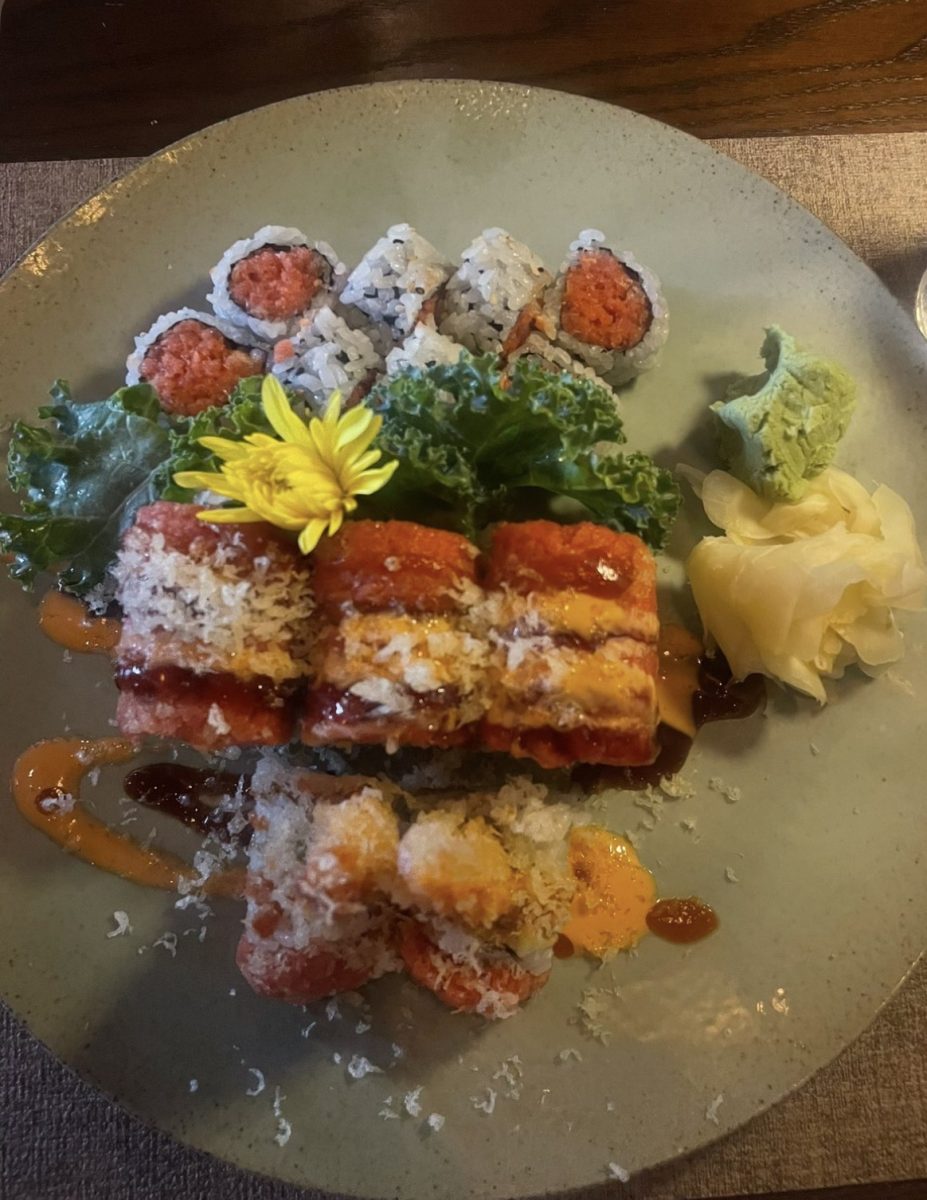Srinagar is a beautiful city in Northern India, famous for its lush gardens and picturesque lakes – and is also the namesake of the newest Indian restaurant in Narberth.
The restaurant itself is painted bright orange, with cozy booths bordering the walls and a takeout counter piled high with brown bags. Sitting down, the menu is almost overwhelming—Srinagar offers dishes from Chinese-inspired hakka noodles to Indian-cuisine staples like chicken biryani.
The meal had to start out with a beverage, and the mango lassi was the perfect drink to do just that. The smooth texture matched perfectly with the mango and yogurt flavor of the drink, soothing the spices of the upcoming dishes.
For appetizers, we ordered the gobi manchurian—a fried cauliflower dish coated in a sticky-sweet tomato pepper sauce. It was shatteringly crispy and boasted a wealth of green onions, whose sharp flavor cut right through the richness of the dish.
The samosa chaat was also delicious. Crispy fried samosas, stuffed with savory potatoes and peas, were drenched in chickpea curry, yogurt, and chutney. The contrast of crispy dough and silky sauce was a winner.
Not to be overlooked was the chili chicken dish, its tender chicken lacquered with a richly-colored, slightly-sweet glaze surrounded by equally flavorful onions and peppers. Each bite was paired with a kick of spice as an aftertaste. Comparatively, the papdi chaat was a cold dish of crackers, potatoes, yogurt, chutney sauce and cucumbers—each bite a mouthful of cool refreshment.
Next, we opted to try the paneer makhani as our first main dish. Fluffy cubes of paneer were steeped in a spiced cashew and tomato sauce. The makhani was warm and comforting, a perfect antidote to the chilly fall evening. The saag paneer, a dish that can (to us) taste overwhelmingly bitter, was executed perfectly. Delicate spinach was combined with a creamy cashew base to create a harmony of rich and plant-forward flavors. Pulling off a dish so well that even a self-proclaimed saag hater could enjoy it was an impressive feat.
Lastly, we tried the vegetable korma. This was a more mildly-spiced sauce than the makhani, but the delicate flavors still shined through. Tender vegetables like crinkle-cut carrots, snap peas, and even water chestnuts were infused with the seasoning of the dish. All mains paired beautifully with the airy basmati rice and chewy naan—classic counterparts to all the savory dishes.
We also decided to try dessert—all three that the restaurant had to offer. The kheer (rice pudding) tasted subtly of cardamom and saffron, lightly sweetened and dotted with nuts. It was packed with dairy but still managed to remain refreshing. The gulab jamun, an Indian specialty of fried dough soaked in syrup, was surprisingly balanced. The syrup wasn’t overly sweet and the dough was tender—this dish was not slipping into the dense and stodgy category.
Surprisingly, the rasmalai (cottage cheese dumplings) may have been the best of the three; each bite was soaked in saccharinely-sweet milk sauce and practically melted inside of the mouth, tasting of cardamom and honey—a perfect way to end the spread.
Every aspect of the restaurant exemplifies one cohesive theme: common dishes executed in extraordinary ways. Through its brightly flavorful menu, favorably moderate prices, and wholly cozy ambiance, Srinagar is an excellent option for anyone looking for a comforting meal within the Main Line.




